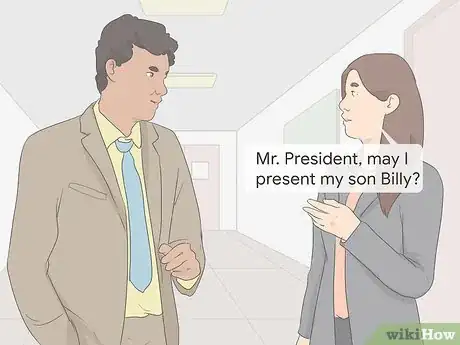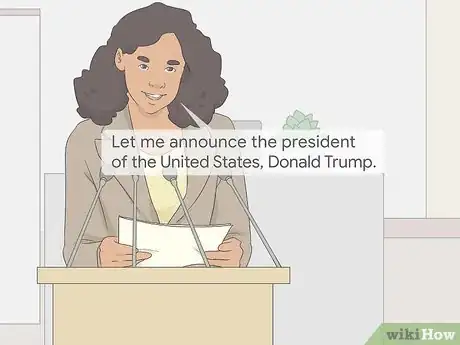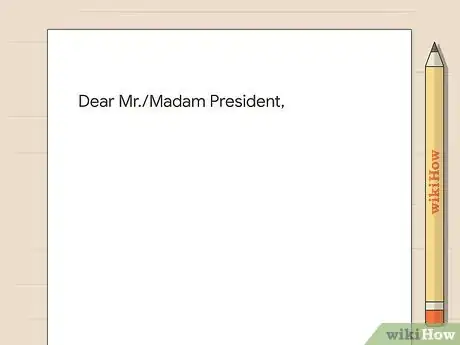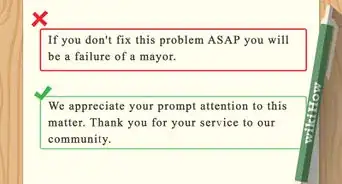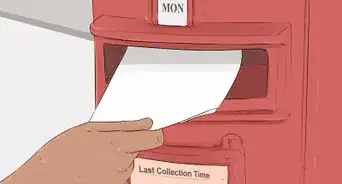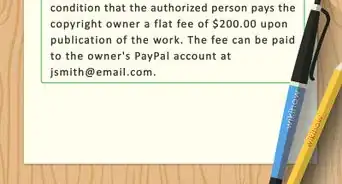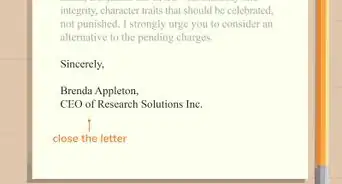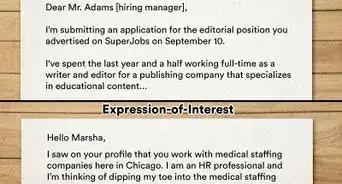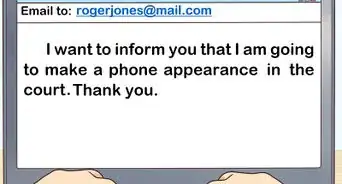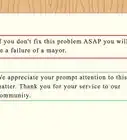This article was co-authored by Tami Claytor. Tami Claytor is an Etiquette Coach, Image Consultant, and the Owner of Always Appropriate Image and Etiquette Consulting in New York, New York. With over 20 years of experience, Tami specializes in teaching etiquette classes to individuals, students, companies, and community organizations. Tami has spent decades studying cultures through her extensive travels across five continents and has created cultural diversity workshops to promote social justice and cross-cultural awareness. She holds a BA in Economics with a concentration in International Relations from Clark University. Tami studied at the Ophelia DeVore School of Charm and the Fashion Institute of Technology, where she earned her Image Consultant Certification.
There are 7 references cited in this article, which can be found at the bottom of the page.
wikiHow marks an article as reader-approved once it receives enough positive feedback. In this case, 100% of readers who voted found the article helpful, earning it our reader-approved status.
This article has been viewed 148,260 times.
If you should have the opportunity to address a current or former president face-to-face, there are certain rules of etiquette you’ll need to follow. Likewise, if you’re planning to send a letter or other form of direct correspondence to the president, you’ll need to address the envelope and letter correctly. Following these rules will show respect for the office of the president.
Steps
Addressing the President in Person
-
1Rise when the president enters the room. All seated persons will be expected to rise when the president enters the room, as a sign of respect.[1] The president will then indicate when those who have risen may return to their seats.
-
2Address the president as “Mr. President” or “Madam President.” Should you have the opportunity to speak directly with the president, do not call them by their first or last name. The title of “Mr.” or “Madam” will show your respect for the office while you carry on a conversation with the president.[2]Advertisement
-
3Introduce a third party to the president. Use the phrase “Mr./Madam President, may I present.” In the United States, the president should not be introduced to someone, as this would seem disrespectful. Always introduce the third person to the president.[3]
- For example, be sure to say, “Mr./Madam President, may I present my son Billy.” Do not say, “Billy, I want you to meet the president.”
-
4Announce the president using his or her title. If you are given an opportunity to announce the president—for example, before they deliver a speech—announce the president to onlookers as “the president of the United States.”[4]
- So, if you’re announcing the current president, you could say: “Let me announce the president of the United States, Joe Biden."
Sending a Letter to the President
-
1Address the envelope to “The President.” In written correspondence, the president’s first and last names should never appear. The address should read:[5]
- The President
- The White House
- 1600 Pennsylvania Avenue, N.W.
- Washington, DC 20500.
-
2Begin your letter: “Dear Mr./Madam President.” This is the polite and expected salutation with which all written addresses to the president should begin.[6]
- Do not use the president’s name in your correspondence. Continue to refer to them as Mr. or Madam President.
-
3
Addressing a Former President
-
1Make your envelope out to “The Honorable” former president. Former presidents do not keep the title of “president” once they leave office (contrary to how they’re often referred to in the media). If you’re writing a letter to a former president, the envelope should be addressed to: “The Honorable [first and last name].”[9]
- For example, you could address a letter to “The Honorable Jimmy Carter” or “The Honorable George Bush.”
-
2Address written correspondence to “Dear Mr” and their surname. A letter to a former president is slightly less formal than correspondence to a sitting president since the recipient no longer holds the office of president. Do not use the term “honorable” in the introduction or body of your correspondence—“honorable” should be used on the envelope only.[10]
- So, your letter would begin: “Dear Mr. Carter” or “Dear Mr. Bush.”
-
3Address a former president as “Mr.” and their surname in person. An in-person address will also be less formal for a former president than it would for a sitting president. For example, you would address Barack Obama as “Mr. Obama,” not as “Mr. President.”[11]
- The rules about introductions are similarly less formal. As a general sign of respect, though, it’s still probably best to introduce a third party to the former president.
Community Q&A
-
QuestionWill the letter be opened and inspected before the president receives it?In fact, the president will probably not read it himself. He receives thousands of pieces of mail, and if he would have to open, read and reply to all of them in person, there'd be no time left to do any presidenting. Instead, he has a team of people reading his letters and e-mails. Most will not get a reply, because it is just too time consuming, or a quick standard reply at best. So to answer, yes, it will be opened, read, tested and inspected, then filed and that's it.
-
QuestionWill the president help me financially if I am dying?No. The president's job is to secure the well-being of all the people in the country, on a macro scale. Since that is a huge job in itself, the president cannot be asked to devote time to any individual human being, no matter what the situation is. Of course, you can always appeal to the president. Write a letter, explain your situation and ask your question. There may be some action, though likely not in person. Letters are screened and sent to sub-offices who reply on the president's behalf, if deemed necessary or useful. You might also try more local organizations who can give you advice on dealing with financial problems.
-
QuestionHow long it will take the president to reply to the addressed letter?The president's job is to run the country. That does not include answering letters from the constituency. Therefore, an office has been installed that sorts post and replies on behalf of the president if necessary or useful. Many letters will be discarded outright, but if an answer is sent, it will probably be at least a month.
Treat the President With Respect
When addressing the president talk to them with respect and be polite. Make sure not to be disrespectful. The presidents take care of our country, treat them well.
References
- ↑ https://presidentoffice.gov.dm/rules-of-protocol2/10-entertaining-the-president
- ↑ https://www.state.gov/protocol-reference/
- ↑ http://www.etiquettetrainer.com/how-to-address-president-trump-and-barack-obama/
- ↑ https://www.formsofaddress.info/foa_president_us/
- ↑ https://www.formsofaddress.info/foa_president_us/
- ↑ https://www.formsofaddress.info/foa_president_us/
- ↑ http://www.etiquettetrainer.com/how-to-address-president-trump-and-barack-obama/
- ↑ https://www.jfklibrary.org/sites/default/files/2021-02/WritingToThePresident_1.pdf
- ↑ http://www.etiquettetrainer.com/how-to-address-president-trump-and-barack-obama/
About This Article
To address the President in person, call them either "Mr. President" or "Madam President". When writing a letter to the President, always address the envelope to “The President”, rather than using the President’s name. Begin the letter with “Dear Mr. President or Dear Madam President”. Never use the President’s name in the letter. For more information on addressing the President, like how to address a former president, continue reading.


